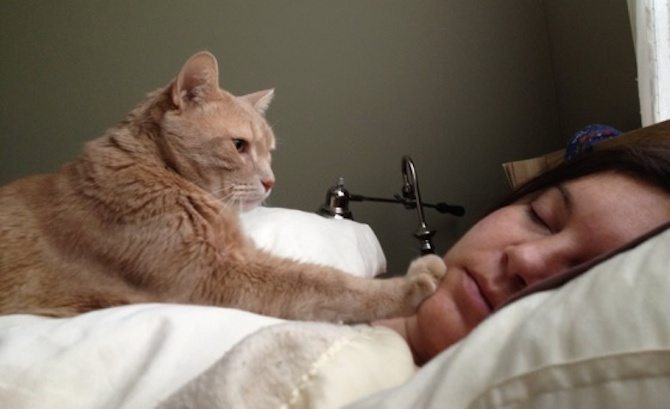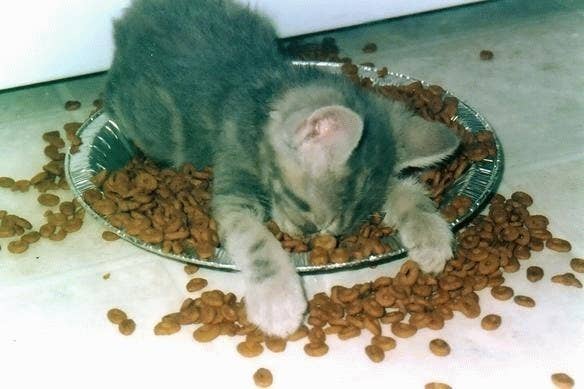Most papers are bad and almost unintelligible. Most of my papers are bad and almost unintelligible. The ubiquity of this is evidence that writing good papers must be hard. So what am I to do about this if I suck at writing? This is not false modesty; I do suck at writing. But I am an engineer, so there must be a way to apply KISS here. KISS works. This blog post describes my current methodology to produce a paper. My version of the famous Elmore Leonard quote is:
Concentrate on the parts most readers actually look at.
Your title, figures, and their captions should work as a stand-alone unit. Write/make these first. Doing this in the form of a Powerpoint presentation is a good method. Explaining your paper to a friend using the white board and then photographing what evolves under Q&A is a good method. Then ruthlessly edit. Ask yourself: what is this figure conveying? Each idea should have exactly one figure, and you should know exactly what each of those ideas is.
Let's do an example. Suppose I were to write a paper on why it is better to feed your cats in the evening than in the morning. First, you should have a figure on what is a cat, along with a caption.
| This is a cat |
Don't assume your reader knows much of anything (see caveat at end of article). Now the figure above has details that are not relevant to the point, so you probably need a different one. Getting exactly the right figure is an iterative process.
If my key reason for not feeding the cat is that in the morning they will wake me earlier each day, I need some figure related to that, such as:
 |
| The problem with a 6am feeding, is the cat starts thinking about it before 6am |
(credit cattree)
Finally, you will need a figure that gets across the idea that feeding the cat in the evening works.
 |
| Feeding the cat before bedtime is effective |
(credit buzzfeed)
So you now have an argument sequence where the reader can "get" the point of your paper. Your actual paragraphs should make your case more airtight, but 90% of the battle is getting the reader to understand what you are even talking about. "What is this?" should never be a struggle, but usually is.
For the paper writing itself, write to the figures. First, add paragraphs that speak to the point of the figure and reference it. Then, add paragraphs as needed to make the point convincing. Each paragraph should have a definite purpose, and you should be able to say explicitly what that is. The results section should convince the reader that, for example, cats do in fact behave better when fed in the evening.
Now, there is a caveat for peer-reviewed papers. Reviewers often think that if something is clear, it must not be academic. They will want you to omit the first figure. This is an example of "you can't fight city hall". But make things as clear as they will let you. If this irritates you, suck it up, and do writing any way you want to in books, blog posts, and emerging forms of expression that you have full control over.
So, in summary, make the figures the skeleton of the paper and do them first. An important point that applies to more than this topic: develop your own process that works for YOU; mine may be that process for you, and may not. Final note-- I feed my cats in the morning.
5 comments:
Amen. On my better technical works, 80% or more of the effort went into the figures and illustrations.
I think its a failing of our educational system that how to visually illustrate is never taught, even in college level technical writing classes.
Hello Mr. Shirley,
Thank you for sharing your opinion on the topic in "plain text"! As a Computer science student, who specializes in Graphics, I highly appreciate your overall work in demystifying concepts using understandable language - your "Ray Tracing in One Weekend" series is a great example of your statement here :) (I had the pleasure and luck, that the publishing of the series somewhat coincided with the start of my journey in the area of Computer Graphics)!
I have two questions about your post: do you think, that the methodology applies to writing a thesis (or for that matter any form of a longer report on a given topic) as well? And do you have additional suggestions on that matter?
As I am currently in the process of writing my Master's thesis report, I find your advice quite useful! Especially the one - an image per concept.
Sincerely,
Haralambi Todorov
Hi Haralambi. I absolutely think it applies to theses. Maybe especially to theses. That is the one document without a lot of length constraint where your thorough literature review and research motivation can really distill the core essence of a field or problem area. This is incredibly useful to the field. Good luck!
Pete
High Technologies Solutions offers Graphic Design training with choice of multiple training locations across Delhi. Further More Details Here-+91-9311002620 Or Visit Website- https://htsindia.com/Courses/web-and-graphic-designing/graphic-designing-training-course
Infuse your life with divine energy and daring fashion with Apna Showroom’s exclusive 5-in-1 combo. This set blends tradition with trend—featuring a pure Brass Gangajal Kalash, a Feng Shui tortoise for grounding energy, a healing crystal, an auspicious Shaligram Shivling, Apna Showroom Grooming Hair Combs for Men and Women Lice and nit removal comb, travelling comb Shampoo combs hair comb for women or girls kids comb mens set- Pack Of 3
Apna Showroom Fishnet Stockings for Women Black Net Pattern with Sock net stockings pantyhose
Apna Showroom Baby's Cotton Panties/Bloomers/Underwear 12 Pieces 12-24 months or 1-2 Years panty for kids baby girls boys kachi
APNA SHOWROOM Shaligram Shivling - Gandaki River - Shaligram Stone - Black Shivling - Carved Shivling - 100g Shaligram - Spiritual Stone - Shiva Lingam - Religious Artifact - Shivling for Puja
Apna Showroom Tic Tac Hair Clips for women tik tak tic tak tic hair pin saree pin women's pin hairpin multicolor hair pin Girls Snap Hair Clips, Girls Daily Use Clips Multi Print Design Stylish clips Multicolour (100 Piece
and striking fishnet stockings. Whether you're elevating your pooja room or personal vibe, this combo is for the spiritually bold. Add to your altar—or wardrobe—and radiate confidence inside out. Shop this sacred-chic set today!
Post a Comment